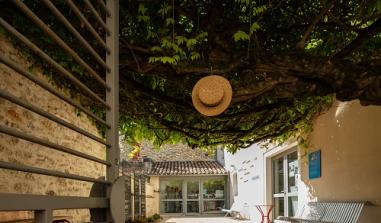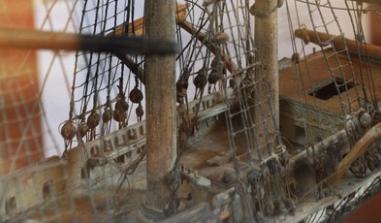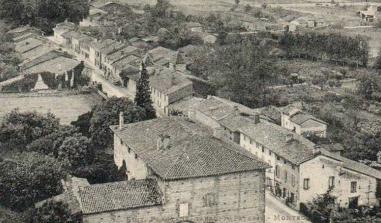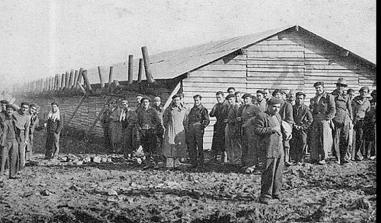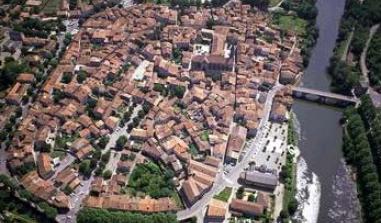The Caylus camp

Camp de Caylus. Le réfectoire. Source : L'ECOLE MILITAIRE ANNEXE DES TRANSMISSIONS (E.Mi.A.T.)
A former medieval fortress on the Quercy-Rouergue border in the Tarn-et-Garonne
The Vichy regime used Caylus, a former medieval fortress on the Quercy-Rouergue border in the Tarn-et-Garonne, to group together and intern foreign workers. The Caylus internment camp (Tarn-et-Garonne), which was set up inside a military camp dating back to 1902, grew after 1920 with the purchase of land, the gradual construction of solid buildings and the creation of a water supply network in 1927. An expansion plan was put forward in 1932. Seven years later, Spanish refugees began the earth-moving work under the watchful eye of French military guards. The growing threat of war in the summer of 1939 increased the demand for labour, and the army used Spanish refugees for the national rearmament effort. When war did break out, they offset the labour shortage resulting from mobilisation. The camp was closed in January 1940.
In June 1940, the Vichy government organised the camp network into a hierarchy. The demobilised garrison returned to civilian life. Poles, most of them Jews, occupied the camp, which was guarded by French officers and non-commissioned officers in civilian dress. At the same time, the group of foreign workers no. 866, known by the camp mail in May-June 1941, succeeded the teams used under the Daladier government. After crossing the demarcation line, German troops took over the camp in February-March 1943. A few of the men in charge of the place concealed weapons and munitions from the occupiers, hiding them in a safe place. Somebody tipped off the Gestapo, which arrested them.
In March 1944, the 2nd SS Panzer Grenadier Division, "Das Reich", a unit of volunteer Waffen SS and Volksdeutsche commanded by General Lammerning, entered southern France. Parts of the division occupied approximately 20 towns in the Tarn-et-Garonne as well as the Caylus camp. In May, "Das Reich" elements quartered in Valence d'Agen and Moissac, commanded by Dickmann, and other battalions (from Montauban, Nègrepelisse and Caylus), under the orders of Werner, swept through the department committing atrocities against civilians. The "Das Reich" units began a ruthless campaign to wipe out the Resistance. On 1 June, the German troops stationed at the Caylus camp carried out reprisals in retaliation for an attack on a munitions dump in Capdenac (Lot), killing nine civilians in the Lot towns of Limogne-en-Quercy, Cadrieu and Frontenac.
Following the war, the camp was used for the internment of German POWs. Afterwards, Caylus resumed its national defence functions, accommodating infantry, cavalry (now motorised troops), artillery, aviation, mobile guard and gendarmerie units. A North African outfit (the 14th Tirailleurs) spent around a year in Caylus before being disbanded when France's colonies in North Africa won their independence. In 1962, NATO used the camp for inter-allied manoeuvres Today the Caylus camp stretches out over more than 5,500 hectares and houses an annex of the army commissariat.
Tourist Office rue Droite 82160 CAYLUS Phone.:+33 (0) 563.67.00.28 Fax:+33 (0) 5.63.24.02.91 E-mail: ot.caylus@wanadoo.fr Caylus Camp Grouping 82160 Caylus Tel.: +33 (0) 5 45 22 42 48
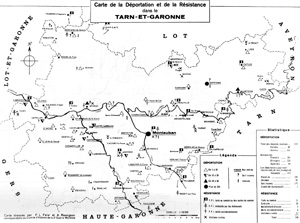
Map of the deportation and resistance in Tarn-et-Garonne
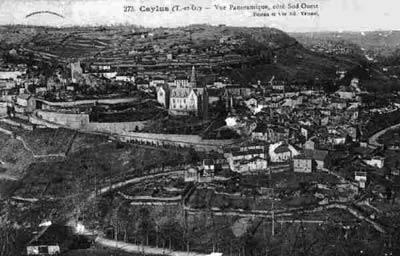
Overview of Caylus - Postcard. Source: www.caylus.com
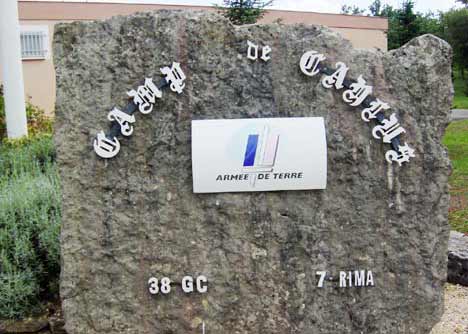
Caylus Camp entrance. Source: www.redwolfairsoft.com
Practical information
82160
Caylus
Tél. : 05 45 22 42 48 Office du tourismerue Droite 82160 CAYLUSTél.: 05.63.67.00.28Fax : 05.63.24.02.91E-mail : ot.caylus@wanadoo.fr
Se renseigner pour l'accessibilité au site


